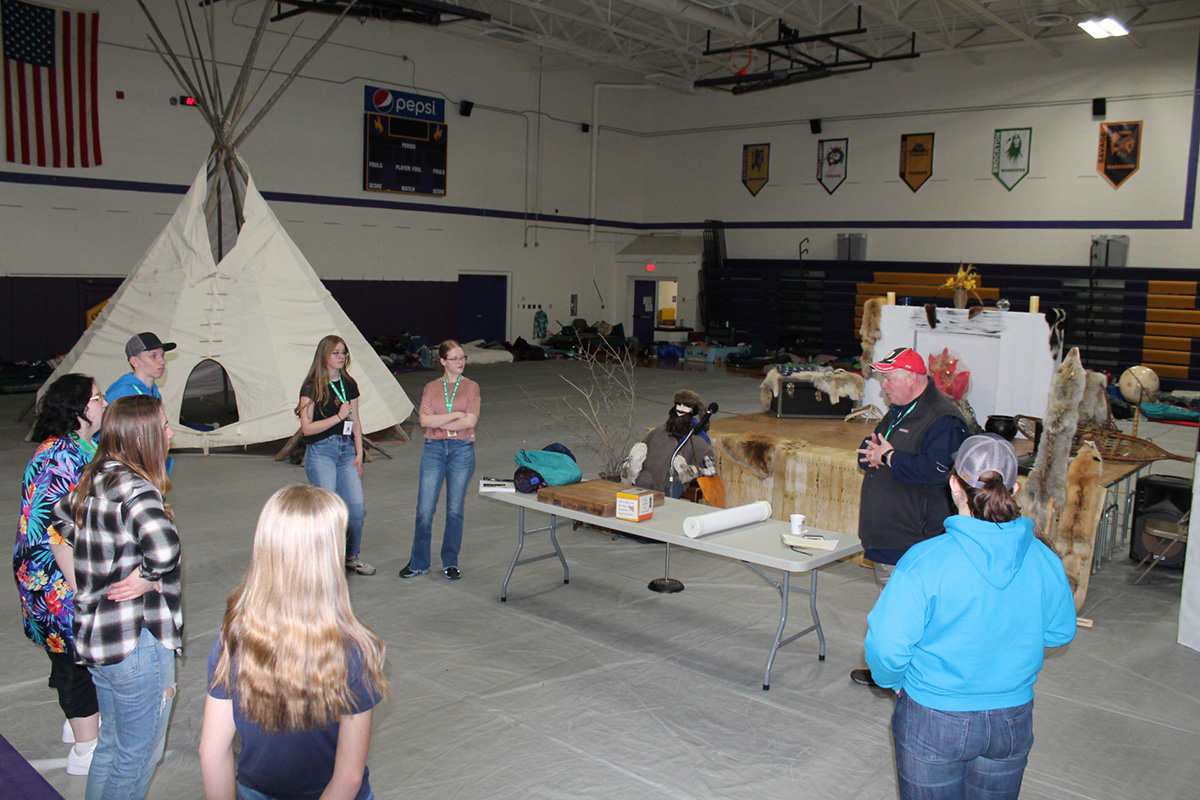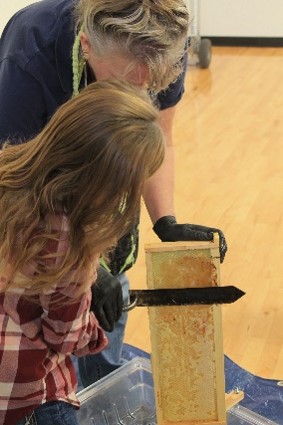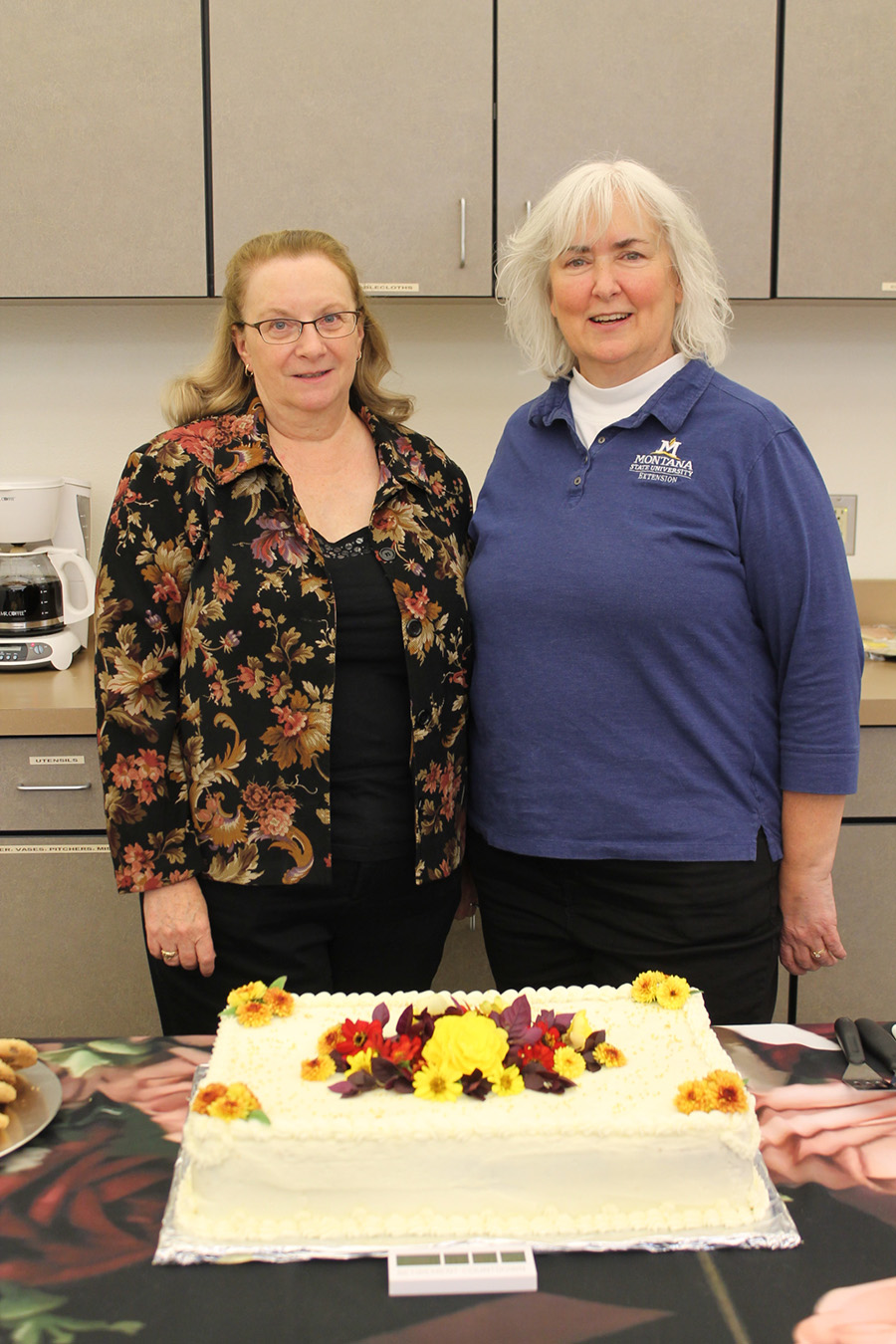Roosevelt County
2023 MSU Extension Highlights
2023 MSU Extension Highlights
Roosevelt County, the 20th largest county in Montana, is located between the Missouri River and Sheridan County, and between the North Dakota state line and Daniels County. It includes 2,385 square miles with farmland encompassing 86% of the land. Wolf Point is the county seat, and other incorporated cities include Bainville, Culbertson, Froid, and Poplar, where the Fort Peck Assiniboine and Sioux Tribal headquarters and the Fort Peck Community College are located. Other communities include Brockton and Fort Kipp. Montana State University Extension is an educational resource dedicated to improving the quality of people’s lives by providing research-based knowledge to strengthen the social, economic, and environmental well-being of families, communities, and agricultural enterprises. The Roosevelt County MSU Extension staff provide services in 4-H youth development, agriculture and horticulture, family and consumer sciences, and community and economic development.
4-H & Youth Development
Roosevelt County Cloverbud Day
In Roosevelt County, we celebrated Cloverbuds with a special day to interact and learn with fellow members. Cloverbuds are youth aged 5-7 in 4-H who are especially focused on hands-on learning and discovery rather than competitive events. This helps develop age-appropriate skill and ability development, like working with another student, creativity, and learning a concept. This also gives Cloverbuds a glimpse into 4-H member projects. This year, we learned about healthy eating habits and created bee hats to wear or showcase at the fair. We exercised with outdoor games and snacks. We also made decorations for the nursing home as a community service project that were delivered during a visit to the Roosevelt Memorial Nursing Home, where participants shared root beer floats with residents.
Caption: Cloverbud Day participants: Oliver Becker, Carys Holbrook, Lachlan Holbrook, Beau Becker, Boone VandenBos, Wiley VandenBos
Credit: Roosevelt County MSU Extension
4-H & Youth Development
Montana 4-H Rec Lab
Culbertson was the host site for the District 4 Recreation Lab, an educational leadership event held annually around the state. It has never been held in Roosevelt County, which showcased the area trading post with the theme “Rendezvous 4-H.” More than 150 4-H’ers, aged 13-18, participated in weekend learning, networking, and leadership activities. The program reimagined Fort Union, which was considered the most important fur trade location on the Upper Missouri River, where tribes exchanged buffalo robes and furs for cloth, guns, blankets, and beads. The Fort Union-themed Rec Lab included beads to trade between education sessions. Rod Lassie, local expert on the history of Fort Union and the fur trade, served as the opening speaker. The Nakoda Dakota Oyate (NDO)Native Youth Council and Spotted Bull Recovery Resource Center demonstrated how to erect a tipi and its significance. Audience volunteers helped secure poles and more than 59 individuals fit inside. Students participated in more than 35 rotating workshops, ranging on topics from ice-breaker activities, extreme leadership, dancing, dutch-oven cooking, chute-side livestock coolers, leathercraft, making coin rings, to parliamentary procedure, livestock water quality, pollinator plants and more. The evening inspirational speaker was Tommy Christian from Fort Peck Community College, who served as a cultural liaison. The concluding day showcased the Pretty Iron Feather Dancers and a sendoff with a round dance. Members from more than 28 counties attended to learn leadership skills and learn more about a piece of Montana history.

Caption: Campbell Barrett presenting a leadership workshop.
Credit: Roosevelt County MSU Extension
Agriculture & Natural Resources
Introduction to Beekeeping
Hobby beekeeping, pollination and native bees all seem to be the buzz around northeast Montana. Shelley Mills and Wendy Becker have been busy informing the region and beyond about what beekeeping entails. Their ‘Introduction to Beekeeping’ classes highlight the distinctions between hobby and commercial beekeepers, as honeybees are regulated by the Montana Department of Agriculture. Beekeeping class topics include costs, type of bees to use and their biology, equipment needed, where to get and place bees, and what kind of plants help pollination occur. The introductory classes help new beekeepers have a healthy hive, understand that beekeeping is a year-round venture, and learn about diseases and pests of bees, including Varroa mites and how to use Integrated Pest Management principles to target disease resistance. In addition, honey extraction classes were held in the school systems, and other bee populations were described in the Introduction to Beekeeping programs.

Caption: Shelley Mills illustrates how to uncap honey.
Credit: Wendy Becker, MSU Extension Agent
4-H & Youth Development
Market Quality Assurance Training
Market Quality Assurance (MQA) Training is a required element of a youth market livestock project. There are nine basic concepts that pertain to raising a market animal. These criteria are quality assurance, facilities, care and handling, nutrition, animal health, labels/withdrawal time, record keeping, biosecurity, and ethics. It’s important that youth learn these aspects and can put them into practice. Hands-on projects make learning more effective, and this MQA venture included making chute-side vaccine storage coolers as part of the training. After learning the basic principles, youth used a 9-quart cooler, three PVC drainpipe pieces, a long drill, and marking utensils to turn the cooler into a vaccine livestock cooler that can be used during brandings, working livestock, or pregnancy testing. There was a sticker included on Quality Assurance principles of proper vaccine placement, temperature-controlled storage, needle length appropriate for a vaccine, safety precautions, PPE, and identification. These stickers listing the principles are directly placed on the cooler. The vaccine holsters on the cooler help to keep tools and product clean, cool, and out of UV light, which helps with the efficacy of the vaccine, the economics of viable vaccines, and cleanliness.
Caption: 4-H'ers making vaccine coolers.
Credit: Roosevelt County MSU Extension
Family & Consumer Science
Longtime MSU Extension Agent Ardis Oelkers Retires
Ardis Oelkers reflects on her career in MSU Extension in Roosevelt County.
“It has been a gratifying and challenging career working for Montana’s land-grant university for 34 years in Roosevelt County. I have had the pleasure of teaching, leading, following, and collaborating with colleagues and community members who have made my career a most fulfilling one. It has been especially rewarding to come back to the county where I was raised and to provide research-based information to area youth and adults and to see the impacts of leadership skills and personal growth in the great people of Roosevelt County. As the saying goes, “All good things come to an end.” I am grateful for the professional opportunities and the work experiences that have allowed me to learn and grow personally and professionally.

Caption: Ardis Oelkers, left, and Mary Fran San Soucie.
Credit: Roosevelt County MSU Extension
Contact
P.O. Box 416
307 Broadway Ave
Culbertson, MT
406-787-5312
https://www.montana.edu/extension/roosevelt
Montana State University Extension is an ADA/EO/AA Veteran’s Preference Employer and provider of educational outreach.

